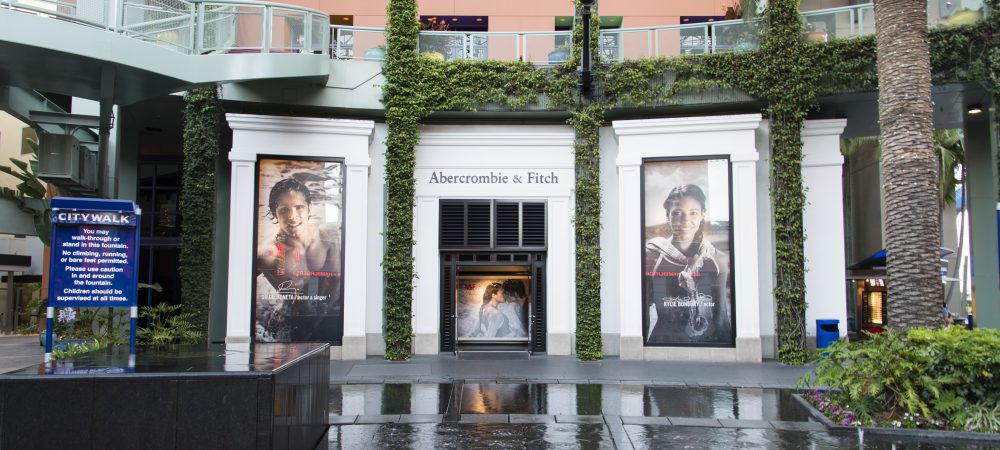Consumers have changed across the years and so have their retail experiences. In fact, retailers have been transforming customer experiences since the 1800s when the department store was born.
For example, the 1920s marked the explosion of the senses—be it Christmas scenes in shop windows or the use of music inside stores, retail has taken the path of emotion. Evoking a positive emotional response from customers can enhance their mood and therefore influence purchasing decisions. Brands such as Abercrombie & Fitch discovered this in the 1970s when sensorial marketing became a priority, seamlessly integrating scent, screens and music to create a unique and recognisable atmosphere.
Fast-forward to the year 2000 when it became necessary for retailers to attract customers via online, and growing customer loyalty became more central to retailers’ strategies. Pop-up retail stores gained traction and brands developed cross-channel strategies between on and offline.
What do customers expect from stores in 2017?
Today’s customer enjoys the convenience of buying online but still expects to be ‘wowed’ and needs a good reason to go in-store. A multisensory customer experience allows brands not only to sell products and services, but to also create an emotional connection with their consumers. It is an intangible asset that is gaining more and more value at a time of accelerated digitalisation.
Here are five ways to enhance your experience:
1. Be savvy with social. Retailers should leverage their social media channels and website assets to help cross-promote in-store specials as well as drive awareness and share incentives surrounding in-store holiday events, loyalty programs, etc.
It’s also important that retailers have a consistent look and feel to their branding and messaging across all their channels, both digital and offline. It should feel seamless to the customer from one platform to the next.
2. Deliver added value via mobile. Studies show that more and more shoppers use their mobile devices while shopping in stores. Holograms, RFID and location-based marketing are among the tools that can help retailers send personalised promotions, exclusive coupons and discounts, and useful tips directly to their customers’ phones while they’re in-store.
3. Engage through sensorial experience. It’s all about creating what cannot be achieved online; stimulate the senses using music, brand-specific scents and visual content to engage and connect with the consumer. For example, shoppers tend to stay longer in locations using a scent solution by an average of at least 15 minutes.
4. Bring your brand story to life with visual elements. This is particularly valuable when retailers are running special sales and deals, arming them with real-time information regarding current inventory levels, etc. Digital signage also allows for incredible flexibility and dynamic, animated content that’s more engaging, helping to reduce perceived wait-times for impatient shoppers.
5. Pop-up stores have been a growing trend. They create a helpful sense of urgency with shoppers since the stores are, by nature, temporary. Not only do consumers feel more compelled toward purchase, but these stores offer retailers a great way to provide a unique experience and test out new store features. Louis Vuitton’s recent pop-up store in Sydney’s Westfield shopping centre not only featured an impressive African-inspired range but it is thought that Louis Vuitton became the first business in the world to open a 3D-printed pop-up store.
What’s in store for retailers of the future?
By 2050 an additional three billion human beings will populate the planet, with two-thirds of them based in urban areas. Innovation in retail will face many new challenges including the environmental impact of the current production and distribution model, the scarcity of resources and the introduction of new technologies.
This will lead to two basic trends: the re-localisation of production, and small-scale production, in particular thanks to 3D printing.
The core objective will be to produce on demand rather than stock, rent rather than buy, repair rather than renew.
What hasn’t changed and will not change in retail is the importance of prioritising the experience that customers have in-store, and strategically creating a positive multi-sensory emotional response.
 Steve Hughes is the managing director of Mood Media Australia, which delivers integrated solutions to more than 470,000 customers globally including Myer, Kmart, The Hilton, David Jones, BWS, Woolworths, Country Road, Freedom, Amcal, H&M and Michael Hill in Australia.
Steve Hughes is the managing director of Mood Media Australia, which delivers integrated solutions to more than 470,000 customers globally including Myer, Kmart, The Hilton, David Jones, BWS, Woolworths, Country Road, Freedom, Amcal, H&M and Michael Hill in Australia.
Want the latest retail news delivered straight to your inbox? Click here to sign up to the retailbiz newsletter.

